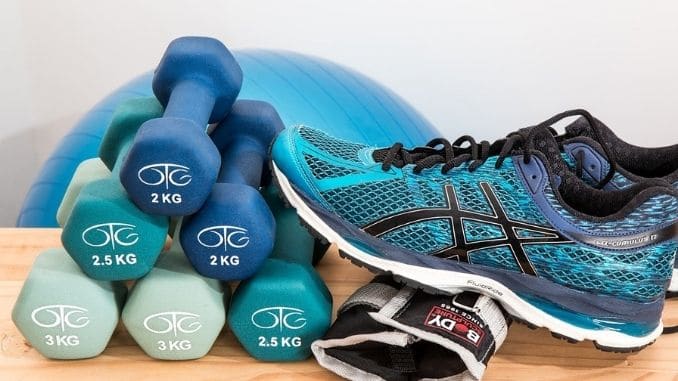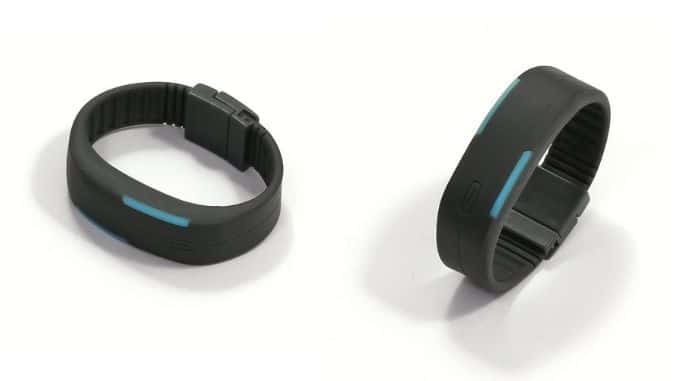
What do you want to accomplish in 2018? Would you like to lose some weight? Build up some muscle? Work more exercise into your daily routine? Eat healthier? Take more time off?Lookat some ways to Keep Your New Year’s Resolutions.
Whatever your resolution might be, odds are that by the time February comes around, you’ll have already abandoned it. Statistics show that only about 8 percent of people keep their New Year’s resolutions and, by the second month of the year, about 80 percent of those who set resolutions have already given up on them.
We set goals with high hopes. We want to accomplish them. So, why do we give up so fast?
There are several reasons. Sometimes, we bite off more than we can chew. Sometimes stressful things happen that throw us off our game. Other times, we don’t have the willpower to keep resisting what we’re trying to resist day after day.
Tips To Keep Your New Year’s Resolution
No matter what your goal maybe this year, we’ve got tips to help you stick to it. Change isn’t easy, and we need all the help we can get.
1. Set Small, Specific Goals
Part of the reason we fail at accomplishing our goals is that we set goals that are too vague or intimidating. We say, “I’m going to lose 20 pounds.” The problem is that’s a big goal, and it doesn’t help you get started. (How am I going to do that?)
It’s much better to set smaller, more specific goals that you’re more likely to stick with.
Some examples include:
-
- I’m going to consume one less soda each day.
- I’m going to skip one dessert each day.
- I’m going to exercise an extra 30 minutes each day.
- I’m going to eat 100 fewer calories at lunch each day.
You get the idea. Make your goal small and specific, and it will be easier for you to manage it. Even if you “fall off the wagon,” so to speak, you can get back on the next day.
2. Connect One Action To Another
One of the best ways to be sure you follow through on your goals is to link one action to another. Instead of trying to break your current routine, which can be difficult, link your new behavior to something you already do.
Let’s say you want to take a run every morning. To increase the odds that you’ll follow through, link this new goal to something you already do. Let’s say after you brush your teeth you put on your running shoes. Brushing your teeth is your signal that it’s time to go run.
Alternatively, let’s say you want to start taking a walk every day after you get home from work. You link one to the other by taking your running shoes with you and changing in the car. That way, when you get home, you’re ready to go, which will reduce the risk of you getting involved in something else first.
Think about where you can link up your actions. If you want to keep a cleaner house, you could say that every Saturday morning after you finish breakfast, you’ll spend 30 minutes picking up. Saturday morning breakfast becomes linked to cleaning up. If you follow through on these new links even a few times, you’ll set yourself a new habit that will be harder to break.
3. Eliminate The Decisions You Have To Make Each Day
Scientists have discovered that each time we make a decision — even if it’s just what to wear in the morning — we use a muscle in the brain that, during the course of the day, can become fatigued. The more decisions you have to make, the more likely you are to make bad decisions because your decision-making function gets tired.
That means if you’ve set a goal to eat 100 fewer calories at lunch, but you have a stressful morning full of decisions you had to make, your brain is going to be tired, which makes it more likely to give into that Big Mac or can of sugar-laden soda.
To increase your willpower, reduce the number of decisions you have to make each day. Lay out your clothes the night before, for example. Decide what you’re going to have for lunch the day before or even the week before. If you map out your meals in advance, you won’t have to make more decisions at lunchtime.
Create your calendar and then stick with it — try not to allow too many changes as you go. The fewer decisions, the stronger your willpower, and the more likely you’ll be to Keep Your New Year’s Resolutions.
4. Put Your ‘Why’ Where You Can See It
If your goal was to build more muscle this year, have no doubt — there are going to be days when you don’t feel like going to the gym, going for a run or whatever activity it is that you’re doing to get stronger. At those times, you’re going to need some extra motivation to Keep Your New Year’s Resolutions.
The best way to get yourself going again is to remind yourself why you set this goal in the first place. Why do you want to build muscle? Is it to appear more toned and fit? Is it to make it easier to go about your daily activities? Or Is it because you’re training for some activity like a marathon or other fitness challenge?
Whatever your reason, do two things: First, write down your why and post it somewhere you can see it easily, such as on the refrigerator or near the mirror in your bathroom. Second, find a picture or two that sums up where you want to be, and post that somewhere you can see it too.
Maybe it’s a picture of an elderly person handling several grocery bags easily, a champion marathon runner or a strong, fit-looking middle-aged woman. Find a photo that represents how you want to see yourself and put it somewhere easily accessible.
Then, when you’re feeling unmotivated, look at these two items. They’ll help remind you why you set this goal in the first place, which may be just the motivation you need.
5. Stop Before You Say ‘Heck With This’
Somewhere along the way, we all come up against moments that challenge our resolve. Let’s say you’ve been regularly going to the gym three times a week before work, and the results have been good. You’ve lost five pounds, and you’re feeling more energetic. Then, one day, everything that can go wrong does go wrong.
The weather is particularly cold that morning. It hits you with a biting wind when you get out of the car. You go inside and, for some reason, the gym is packed, and you have to wait 15 minutes to use the machines you want to use.
You’re extra tired that day, so you slip on the treadmill and scrape your arm catching yourself. When you go back outside, the cold hits you again, particularly because you’re sweaty now. You go home and sink into the bathtub and think, “Heck with this. It’s not worth it.”
When you start to feel this way, stop. Think back over what you just went through and try to improve the process where it breaks down. Can you invest in a warmer coat to help you feel more comfortable on cold mornings? Perhaps a nice hat or scarf would do the trick.
Can you change it up by trying some of the other machines that no one is using, or perhaps go in 15 minutes earlier to try to avoid the crowds? How about taking along a Thermos of coffee that waits for you in your car after you’re finished — something to look forward to?
Find ways to make the process more pleasant. Problem-solve so that you are more likely to keep up with the goals you’ve set and Keep Your New Year’s Resolutions. Usually, just a couple of small changes are enough to get you going again.
6. Focus On The Positive
We often are own worst critics. Maybe you’ve lost three pounds come February, but your goal was to lose five. So, you figure you’re failing to Keep Your New Year’s Resolutions.
This sort of point of view will guarantee that you do fail. Instead, keep your mind on the positives. You lost three pounds! That’s great — and it’s more than you would have lost had you not set your goal. Pat yourself on the back. Maybe your initial goal was too high anyway. Lower your expectations and regroup, then try again in February. Try to lose those three pounds again.
You can train yourself to think about what’s going right. (Maybe that would be a good goal!) Keep looking for what you’re doing better than you did before. Each time you make a step toward your goal, give yourself credit. Talk nicely to yourself, as you would to a friend.
“You’re doing it. You’re losing weight. You have to keep going.”
7. Measure Your Progress
The more you can actually “see” your progress, the more motivated you will be to keep going. That means that anything you can do to measure your progress, you should do.
Maybe you can use a pedometer to count your steps each day if your goal is to move more. Or maybe you need a chart on which you can keep track of how many miles you’re covering each day if your goal is to get ready for a marathon. Maybe you need a calendar that shows how many days each week you did your muscle-building workout. Then, if you skip one, it will show as a glaring hole.
Another great way to measure your progress is to share it with friends. If you have someone else who’s working toward the same goal, or even a different goal, as long as you have regular check-in times to share your progress, you’ll be more likely to stick with your resolutions. You can check in at weekly lunches or via email or text — the important thing is that you each serve as a cheerleader for the other.
You can also use computer apps to help you Keep Your New Year’s Resolutions.
Some options include:
-
- Strides
- Way of Life
- GoalsonTrack
- Coach.me
- Rewire
- Balanced
- ATracker
- LifeTick
- Irunurun
- Lift
- StickK
8. Celebrate
As you go along working toward your goal, it’s critical to celebrate your accomplishments. Don’t wait until the end of the year. You need to feed your brain rewards for doing what you want it to do.
The idea is to focus on “small wins.” Did you shun that cookie after lunch? Get your workout in after work? Focus on the positive all day long? Researchers from the Harvard Business School found that when employees tracked small achievements they made each day, they were more motivated to Keep Your New Year’s Resolutions.
Even small accomplishments trigger the brain’s reward system, which makes us feel good, and increases the odds that we’ll do more.
You can celebrate your small wins in a number of ways. Offer yourself rewards each time you complete a task that takes you closer to your goal. Set up weekly celebration times with the friends who are working on goals with you.
Once a month, reward yourself by going out with friends, enjoying a quiet afternoon in your favorite place, or getting that new small purchase you’ve had your eye on. Keep a journal where you track your accomplishments each day. Create a chart with gold stars on it if you want to — it’s not silly if it works.
Do what makes you happy, because how you feel affects whether or not you will Keep Your New Year’s Resolutions.
9. Forgive Yourself
Before you start working toward your goal, it’s best to realize that somewhere along the line you’re probably going to mess up. You’re going to skip that workout, eat that brownie or spend more money than you budgeted.
Promise right now that when that happens, you’ll forgive yourself. It’s important because these types of slip-ups often lead to people giving up on their goals. If you decide right from the start that you probably will make mistakes, and you won’t allow them to cause you to give up, you’ll be much more likely to reach your goal by the end of the year or sooner.
One mistake doesn’t give you permission to give up. One mistake is simply one mistake. Forgive yourself and start again the next day. Remind yourself of what you’ve accomplished so far and be willing to accept a temporary setback.
10. Re-evaluate As You Go
What sounded like a good goal at the beginning of the year may no longer make sense by the time July comes around. There could be a lot of reasons for that. Maybe you lost the weight you planned to lose by then and come July, you’re not sure what to do next.
Maybe you ran into a life event that set you back significantly and made it near impossible to keep going after your goal. (If you set a goal to save $100 a week, for example, but then someone in the family became sick, that may no longer be possible.)
Be willing to be flexible. There’s nothing wrong with re-evaluating your goals throughout the year to make sure they are still serving you. Remember that you set the goals to make your life better, not to create a new taskmaster that you must obey no matter what. If you find somewhere along the way that the goal is no longer helping you to feel better in life, it’s time to change it.
Maybe you can adjust your weekly savings amount to $10 a week. Maybe you can change your goal from losing weight to maintaining your weight loss, which is an equally difficult challenge. Perhaps your goal of thinking positive is derailed by a death in the family, after which your goal may change to finding ways to cope with your grief.
Conclusion
Life happens, no matter what our plans are, so be ready: you may need to change this goal somewhere along the way. Imagine how you might downsize it or the reverse — increase the challenge if it’s no longer challenging you by mid-year to Keep Your New Year’s Resolutions.
It may be best to set a time each month to take a second look at your goal, like the first Sunday of each month, for example. Use that time to make sure this is still the right goal for you, and then either recommit to it for another month or adjust it to what will work for you now.
Finally, believe in yourself. You have the power to make positive changes in your life. By following these tips, you can increase your odds of following through and, by this time next year, you could be amazed at what you’ve accomplished.
If you are looking for ways to lose weight, build muscle, have more energy throughout the day and get healthier without having to become a total health and fitness nut, then check out the Bodyweight Blender program, here!









